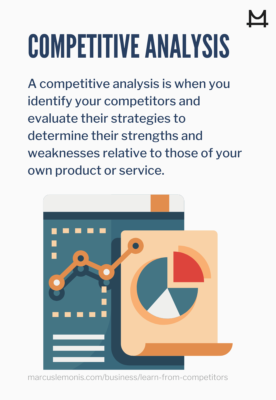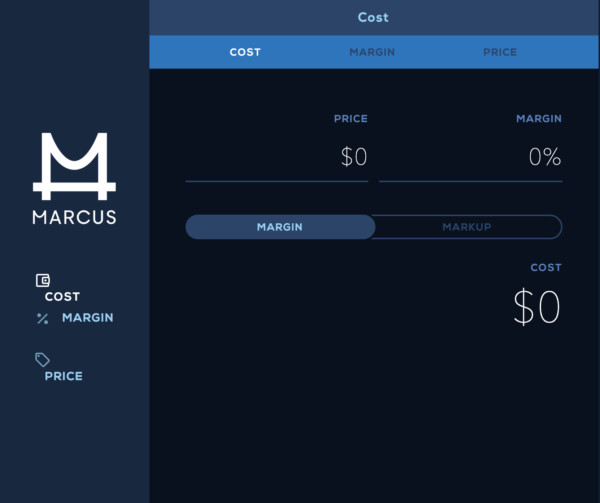Key West, Florida, is a town built on a tiny piece of land—barely over 5.5 square miles—with an estimated population of just 24k people. With at least 54 different businesses offering key lime pies in town (Yelp, 2020), if you think that the market is supersaturated and that competition is hyper-aggressive, you would be half right. Over 5.1 million tourists visited Key West in 2019. After conchs (it is “The Conch Republic” after all), the second most requested food item is the iconic key lime pie. So, is the market supersaturated? Given the volume of demand… not necessarily, but it is definitely a dog eat dog world out there. Almost every restaurant in town, as well as numerous specialty shops, feature key lime pie on their menu. This is why when Marcus offered his consulting services to a Florida Keys based pie shop, he knew he had to do an excellent competitive analysis to provide proper guidance and help them win a piece of the market share. After all, “keeping tabs on your competition is a great strategy for growing your business” (Dahl, 2011).

What is a Competitive Analysis?
According to Entrepreneur.com’s encyclopedia, a competitive analysis is when you identify your competitors and evaluate their strategies to determine their strengths and weaknesses relative to those of your own product or service. This is a fundamental practice that you may have already been doing on your own, not realizing that there was a formal term for it. As an entrepreneur, you have probably thought about many different business ventures and how they might perform in a specific part of town.
For example, you probably would not want to open a hair salon on the same block as a renowned hairstylist with a strong clientele in your city—but then again, maybe you do. Once you do your research, you may be surprised by what you learn. What if once you analyze this famous hair stylist’s business, you notice that he books up so fast that he turns down a large number of walk-ins. Maybe being just down the street from him could offer you a lot of business. This is the type of business decision you can make once you study the market around you and the companies that could potentially be your competitors.


Let’s look at a gourmet marshmallow business from Indiana where Marcus offered his consulting services back in 2014. After studying the competitive space, Marcus concluded that there was opportunity for mass-marketed marshmallows in the online space. With the proper packaging and the right products, Marcus estimated the company could generate over $2 million in marshmallow sales. So just how did Marcus come to that conclusion? A thorough competitive analysis. First, he looked at other small businesses in the marshmallow segment to determine the competitors’ strengths and weaknesses within the market. That’s how he decided that this Indiana-based small business had an excellent opportunity to break into e-commerce because nobody else was doing it correctly. Then he looked at the company’s packaging and compared it against those being sold online. This is how he determined that the packaging needed an upgrade to compete and surpass the other brands in virtual storefronts. Without this type of analysis, the marshmallow makers might not have taken advantage of the e-commerce opportunity. And if they had—without an update to the packaging—it might not have been as well received.

What Should You look for When Developing a Competitive Analysis?
Take into consideration all the businesses in your vertical (meaning companies that are in your same line of business) and look at other companies who may not be in the same vertical but share some similarities. Look at the market from your potential customer’s point of view and categorize your competitors by the degree to which they contend for your audience’s pocket and attention. Let’s go back to the key lime pie company as an example.
The many other pie shops in the area are definitely in their vertical. After all, they are competing for the same audience with the same type of offering. But souvenir shops might also be competition, even if they don’t sell key lime pies.

Tourists usually travel with a specific spending budget in mind. Maybe instead of spending their money on an iconic experience, they would rather spend it on something tangible to take back home. At this point, the souvenir shops stole your customer, making them competition outside your vertical. A bar could be another example. Some visitors might find themselves at a crossroads after dinner: cocktails or dessert? At which point, a bar becomes a competitor even though the pie shop doesn’t even serve liquor. That’s why, before jumping into the key lime pie business, Marcus had to ask the following questions:
- Who are your competitors?
- What products or services do they offer?
- What is their market share?
- What have they done in the past to promote their offering?
- What are their current promotional strategies? Analyze their results.
- What type of media is used for marketing their products or services?
- What is their social media presence?
- What are each competitor's strengths and weaknesses?
- What potential threats do your competitors pose?
- What potential opportunities do they make available for you?
Once all those questions are answered, you can categorize your competition into two main buckets: in-vertical and out-of-vertical. You can then build a solid business plan for your business based on what you’ve learned. From small startups to multinational corporations, all companies need to make a competitive analysis before opening a new business, developing a new product, or offering a unique service.


Why is Competitive Analysis Essential, and How Can it Benefit Your Business?
Doing a competitive analysis gives you a sneak peek into the rival team’s playbook. Who do you think does better in a game, the team that has studied their competition, or the team that steps out onto the field blind?
Let’s talk football. As a head coach, you plan your plays, knowing that the other team plays a passing game or a rushing game. You know who the strong players are and the weaknesses you can take advantage of. You know who to watch for, and whether or not you need to give your quarterback more or less protection. Competitive analysis helps you understand your competitors and gives you an idea of what the market is like before stepping out onto the field.
But I can also help you adjust your strategy along the way. Maybe your strategic plays are not coming out as you had envisioned. Well, you can always rely on your competitive analysis to try to figure out where you could make adjustments to tighten up your offense or your defense. Maybe the competition is stealing your customers; perhaps you’re not aggressive enough fighting for your slice of the market share pie. A competitive analysis is a great tool that can also help you find potential ways to improve your business strategy.

Inspiration for New Ideas
Maybe potential competitors outside of your vertical are doing something you might have never considered for your business. While it’s not recommended to imitate or plagiarize someone else’s strategy, you can always get ideas that could apply to your business. For example, tourist attractions advertise with the cruise ship companies that dock on the island, bringing hundreds of thousands of visitors to Key West every year.
While eating key lime pie is not necessarily a tourist attraction like Ernest Hemingway’s home tour or a photo op at the Southernmost Point in the Continental US, a slice of authentic key lime pie is definitely a unique experience. So why not advertise the shop aboard cruise ships just like the tourist attractions do? That way, when cruisers disembark they’ll know precisely which pie shop, out of the numerous options, they should go to.


Have you ever done a competitive analysis? How deep have you gone with it? Knowing what you know now, do you think you could go further and discover more insights to help your business succeed? The bottom line is knowing that there is a limited amount of money on the street, and everyone is fighting for their share. Knowing your competition—whether direct or indirect—will allow you to strategize better so you can be ready to take on the opposition. Prepare for their strengths and work to combat your company or product’s weaknesses.
- Do you currently conduct competitor analysis for business/industry?
- How does/How can it benefit your business?
Dahl, D. (2011, May 11). Researching your competition. Retrieved September 27, 2020, from https://www.inc.com/guides/201105/10-tips-on-how-to-research-your-competition.html
Entrepreneur Media (Ed.). (2020). Competitive analysis definition – Entrepreneur Small Business Encyclopedia. Retrieved September 27, 2020, from https://www.entrepreneur.com/encyclopedia/competitive-analysis
Key West Visitor Information. (2020, September 22). Things to do in Key West. Retrieved September 27, 2020, from https://www.keywestchamber.org/
Yelp (Ed.). (2020, September). Top 10 best key lime pie in Key West, FL – Last Updated September 2020. Retrieved September 27, 2020, from https://www.yelp.com/search?find_desc=Key+Lime+Pie





